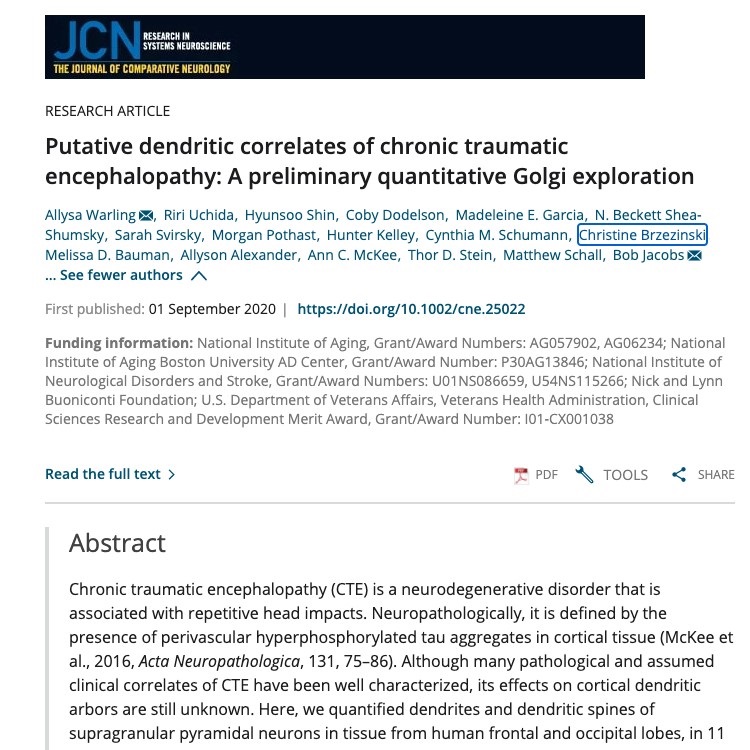Allysa Warling '19, who graduated summa cum laude with a degree in neuroscience, is the first author on a research article titled "Putative dendritic correlates of chronic traumatic encephalopathy: A preliminary quantitative Golgi exploration" published in the September issue of the Journal of Comparative Neurology.
Warling, from Loveland, Colorado, conducted the research with CC Professor of Psychology Bob Jacobs. Also co-authoring the published research are six additional Colorado College students and alumni, including Hyunsoo Shin '21, Coby Dodelson '20, Riri Uchida '20, Madeleine Garcia '17, N. Beckett Shea-Shumsky '18, and Melissa Bauman '98. "The article would not have been possible without their dedicated contributions," says Jacobs.
The article, which focuses on the effects of sports-related repetitive traumatic brain injury on brain cells, was the culmination of several years of research in Jacobs' Laboratory of Quantitative Neuromorphology.
Repetitive traumatic brain injury has many acute and downstream effects, one of which is that it is correlated with the development of a neurodegenerative disease known as chronic traumatic encephalopathy (CTE), which recently has been recognized in many professional football and hockey players.
"The study found that the nerve cells in the cortex of those diagnosed with CTE were, overall, less complex than nerve cells in the cortex of normal, control individuals," says Jacobs. "In addition, there was a lot more variation in the nerve cells of CTE cases: some very complex, and some very damaged, which reflects the CTE brain trying to compensate for the overall loss of connectivity. Neurons in the CTE brain were, in short, a bit of a mess, with neurons trying to compensate for the loss of neurons and the brain trying to survive some pretty significant injury."
Warling adds, "Some of the effects of traumatic brain injury and CTE on the brain are relatively well-known. For example, CTE causes certain pathological changes in the brain including abnormal protein deposits - much like what is seen in Alzheimer's disease, and causes dementia-like symptoms in people who have it. But, the effects of traumatic brain injury and CTE on brain cells themselves were not known. When we examined the brain cells specifically, we observed notable degeneration in some of the outgrowths of the cells. This kind of degeneration has never been officially documented in CTE before. We think it might be a new pathological correlate of the disease, which is why we think this work is so interesting and important."
Jacobs notes that it is highly unusual to have an undergraduate be first author on a paper. "This is only the fifth time I've had a student be first author in 30 years," he says, noting that Warling was involved in collecting the data, which was part of her senior thesis. "Even after she graduated, she remained involved in the project and did a substantial amount of the writing, also very unusual for an undergraduate. She knows more about CTE than I do - I relied on her for her expertise."
"Working on this project was a major highlight of my time at CC," says Warling. She says the experience has shaped her continued interest in neuroscience and helped her land the job she currently has as a research assistant at the National Institute of Mental Health, where she works with and studies children with rare neurodevelopmental and neurogenetic disorders. She also is applying to medical school and hopes to be a psychiatrist or neurologist in the future.



